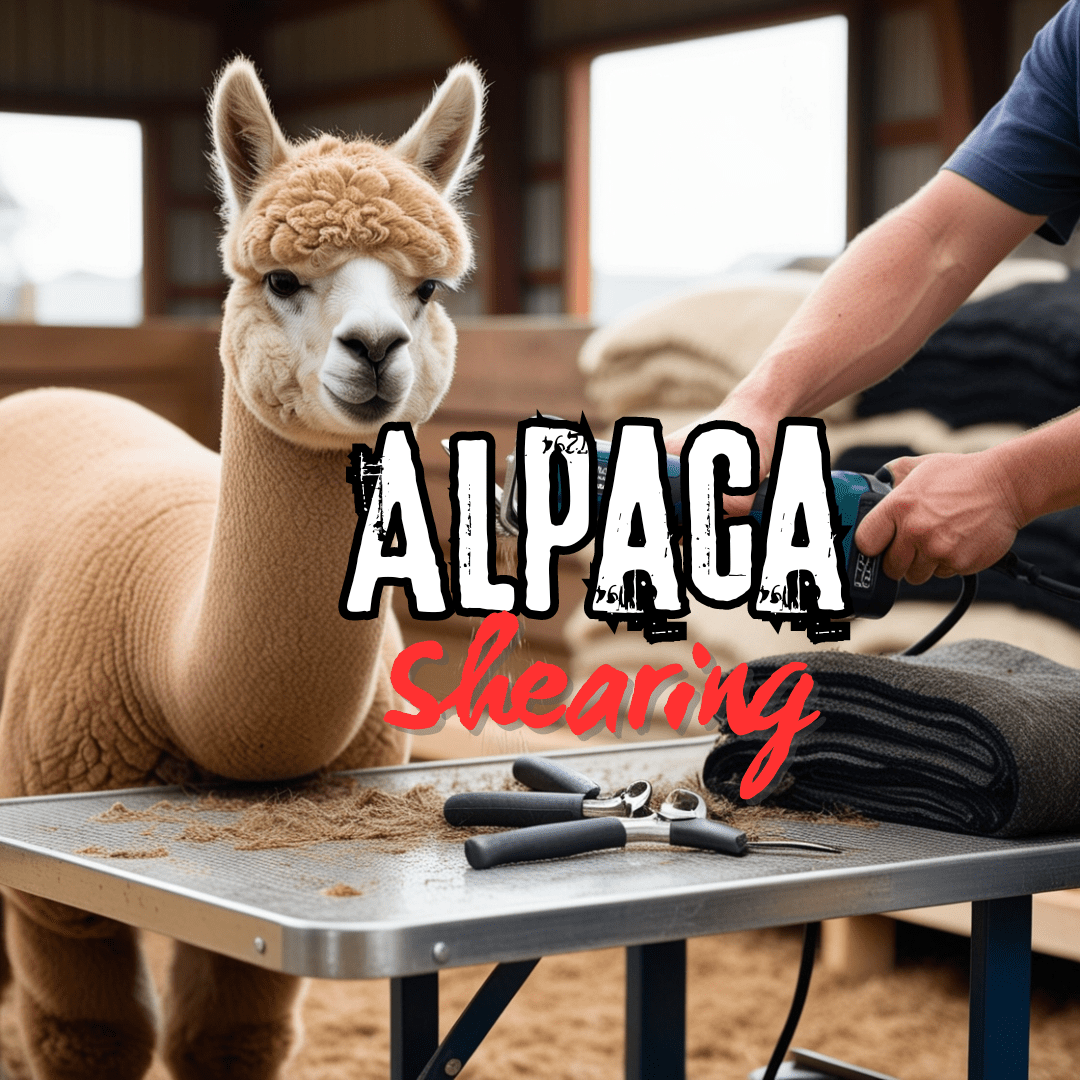Alpaca Shearing Guide for Beginners: When, How, and Why It’s Important
Alpaca shearing is an essential part of maintaining the health and well-being of these animals. Regular shearing not only keeps alpacas comfortable during warmer months but also provides high-quality fiber for use in textiles. If you’re new to alpaca farming, understanding when and how to shear your animals, along with the tools and techniques required, is critical for success. This guide will walk you through the process of shearing alpacas, offering tips to help you avoid common mistakes and ensure a smooth experience for both you and your alpacas.
Why Is Shearing Important?
Alpacas need to be sheared at least once a year, primarily for the following reasons:
- Preventing Overheating: Alpacas have dense coats that can lead to overheating, especially in warmer climates. Regular shearing ensures that they remain comfortable and healthy.
- Fiber Production: Alpacas are prized for their luxurious fleece. Shearing annually maximizes fiber yield and ensures it is of high quality.
- Hygiene and Health: Long fleece can trap dirt, debris, and parasites. Shearing helps maintain hygiene and allows for a better assessment of the alpaca’s overall health.
When Should You Shear Alpacas?
The best time to shear alpacas is in the spring, typically between April and June. Shearing in the spring gives the alpacas time to regrow some fleece before the colder months while preventing overheating in summer. Here’s a timeline to help you plan:
| Month | Shearing Task | Reason |
|---|---|---|
| March | Prepare tools and schedule shearer | Get ready for shearing season. |
| April | Begin shearing | Start before temperatures rise. |
| May-June | Finish shearing | Ensure all alpacas are sheared. |

Tools You’ll Need for Shearing
Shearing alpacas requires specific tools. Investing in high-quality equipment ensures the safety and comfort of your animals while making the process easier for you.
Essential Tools:
- Electric Shears: Designed specifically for alpacas, these shears cut through dense fleece efficiently. Choose shears with variable speeds for better control.
- Shearing Table or Mat: A table or mat helps secure the alpaca during shearing, reducing stress for both you and the animal.
- Blades and Combs: Ensure you have sharp blades and appropriate combs. The most common setup is a 13-tooth comb for general shearing and a 9-tooth comb for rougher areas.
- Ropes and Restraints: To prevent sudden movements, use soft ropes or restraints to secure the alpaca gently.
Step-by-Step Shearing Guide
Proper technique is vital for a successful shearing session. Follow these steps to shear your alpaca safely and effectively.
1. Prepare the Alpaca and Equipment
- Clean the Fleece: Remove any large debris, dirt, or vegetation from the alpaca’s fleece.
- Check Tools: Ensure your shears are clean, lubricated, and the blades are sharp.
- Secure the Alpaca: Place the alpaca on a shearing table or mat. Use restraints if necessary, but be gentle to avoid causing stress.
2. Start Shearing from the Belly
Begin by shearing the belly area. This section typically has the least valuable fiber, so it’s a good place to start if you’re still getting used to the shearing process.
3. Move to the Blanket Area
The blanket area (back and sides) has the highest-quality fleece. Use smooth, even strokes to ensure a consistent cut. Be mindful of the alpaca’s skin, as it’s easy to nick if you’re not careful.
4. Finish with the Legs and Neck
These areas have coarser fleece and may require different blades or combs. Go slowly around joints and curves to avoid injuring the alpaca.
5. Check for Skin Issues or Injuries
Once shearing is complete, examine the alpaca’s skin for any cuts, abrasions, or signs of parasites. Apply an antiseptic if necessary and keep the alpaca in a shaded, cool area post-shearing.
Common Shearing Mistakes to Avoid
- Not Sharpening Blades: Dull blades can cause tugging and uneven cuts, leading to discomfort for the alpaca and lower fleece quality.
- Shearing Too Late in the Season: Delaying shearing increases the risk of overheating. Aim to finish before temperatures rise significantly.
- Inconsistent Pressure and Speed: Apply even pressure with the shears and maintain a consistent speed for a clean cut. Inconsistent shearing can result in an uneven fleece and more second cuts (small, unusable fiber pieces).
The Economics of Alpaca Shearing
Shearing is an investment that pays off in terms of fiber quality and animal health. On average, a single alpaca can produce 5-10 pounds of fleece annually. The most valuable fiber comes from the blanket area and can be sold for $3 to $10 per ounce, depending on the grade and color.
| Fiber Grade | Price per Ounce |
|---|---|
| Premium (Baby Alpaca) | $8-$10 |
| Medium (Second Cuts) | $5-$7 |
| Coarse (Neck/Leg) | $3-$5 |
Conclusion: Mastering the Art of Alpaca Shearing
Shearing is a critical skill for any alpaca owner. With practice and the right tools, you can master this process, ensuring the health of your animals and the quality of your fleece. Always prioritize the comfort and safety of your alpacas during shearing, and don’t hesitate to seek help from experienced shearers if you’re unsure.
For more in-depth information on alpaca care, you can visit this Wikipedia article on alpaca farming.
